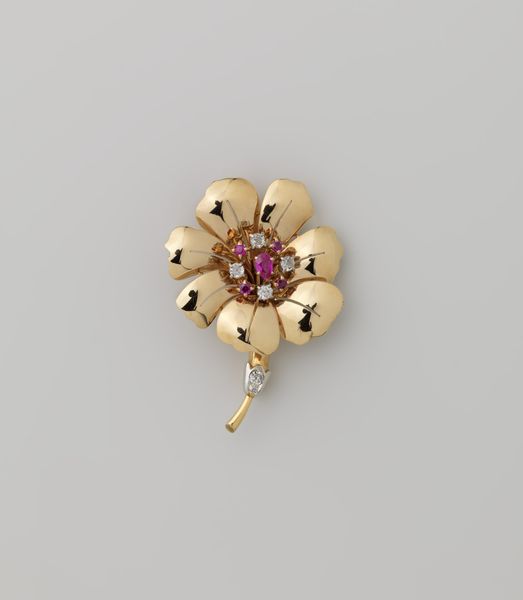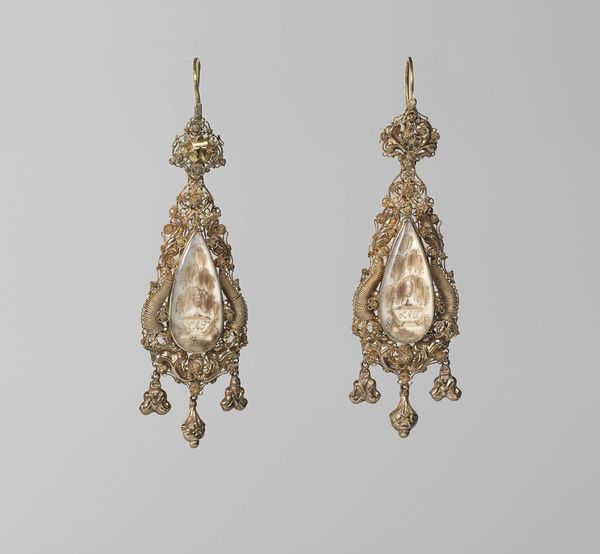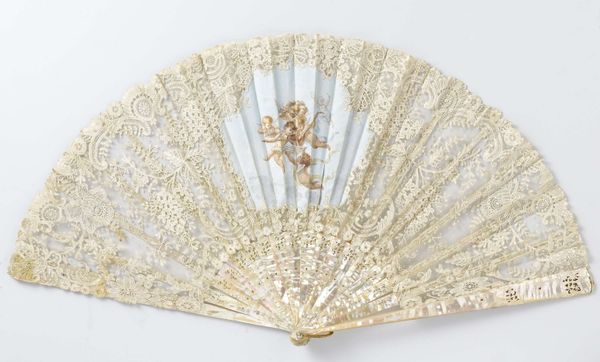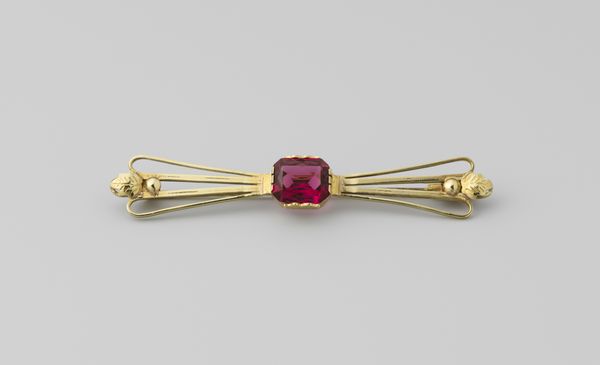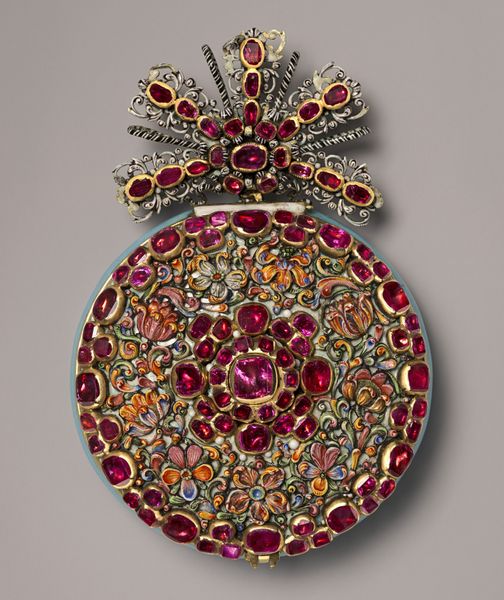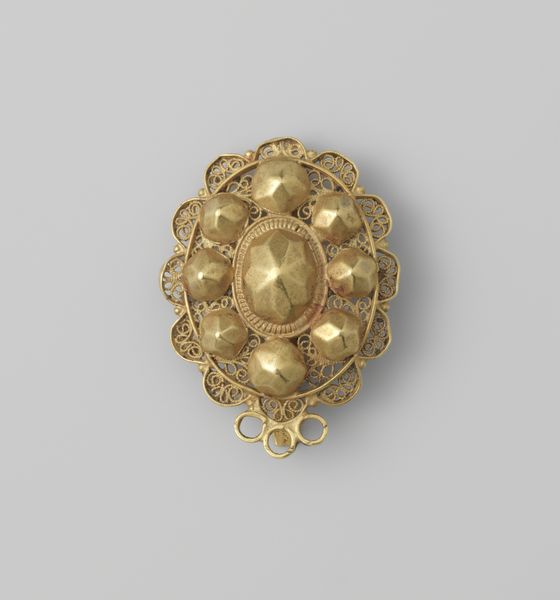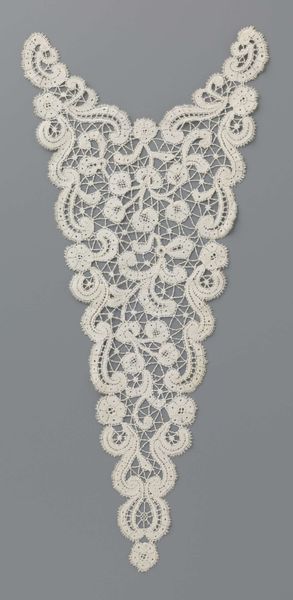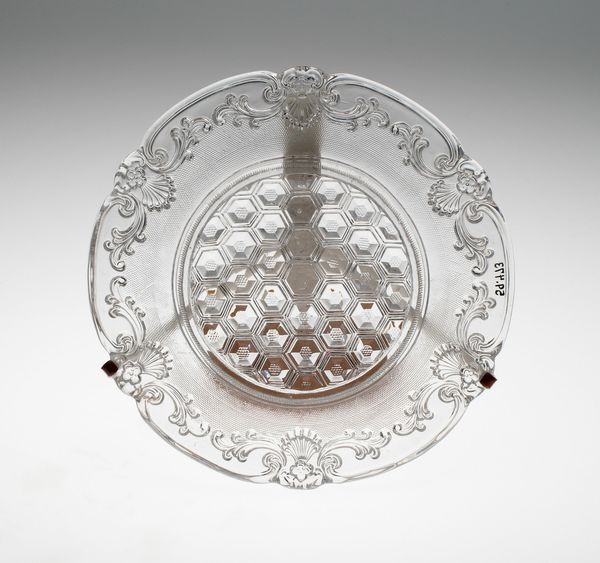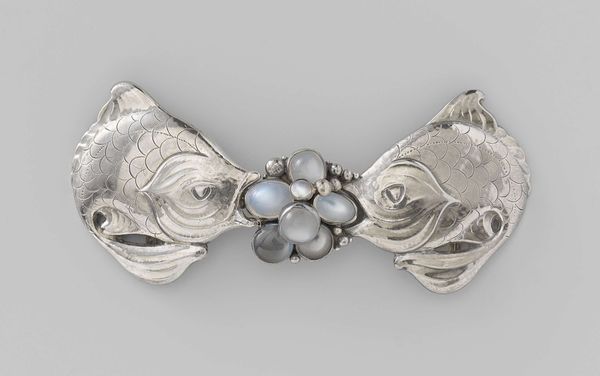
silver, metal
#
portrait
#
silver
#
baroque
#
metal
#
jewelry design
#
decorative-art
Dimensions: height 7.7 cm, width 9.8 cm, thickness 1.8 cm
Copyright: Rijks Museum: Open Domain
Editor: This is a bow brooch, made around 1650 to 1675, artist unknown. It's crafted from silver, pearls and perhaps rubies? It has this formal, opulent feel to it. What can you tell me about its significance? Curator: Well, consider its creation during the Baroque period. This brooch speaks volumes about status and societal expectations. Silver, pearls, rubies— these weren't just pretty adornments; they were symbols of wealth, power, and social standing. Who do you think would have worn something like this and where? Editor: Perhaps a wealthy woman at court? I imagine it being worn at a royal event to show wealth, or on formal portrait to display status and belonging. Curator: Precisely! And notice the bow design itself. Bows were a popular motif in Baroque art, often signifying elegance and refinement, think how court rituals shaped not only fashion but perceptions of beauty. It begs the question, doesn’t it, how much these external pressures defined identity. What would be the contemporary equivalent of this item, you think? Editor: It makes me wonder what this kind of symbol would translate into today...perhaps the popularity of brand-name items, a Rolex or an expensive handbag, worn almost like armor? Curator: An apt comparison. This piece offers us a lens into a world steeped in hierarchy, where even the smallest details of personal adornment carried significant weight. Understanding this object means understanding its historical role in displaying status. Editor: That's fascinating! I hadn’t thought about it as social communication and commentary, rather than purely as adornment. Curator: Precisely! It shows that art, even in jewelry, always reflects a society's values and power dynamics.
Comments
rijksmuseum about 2 years ago
⋮
The shape of this brooch is known from a design that the jeweller to the French king Louis XIV made in 1663. It is a bow-knot in gold, which is enamelled and set with precious stones. Double bows were worn by the wealthiest of women. Amalia of Solms, the Dutch Stadtholder Frederick Henry’s consort, sports a brooch of this type in several portraits.
Join the conversation
Join millions of artists and users on Artera today and experience the ultimate creative platform.


